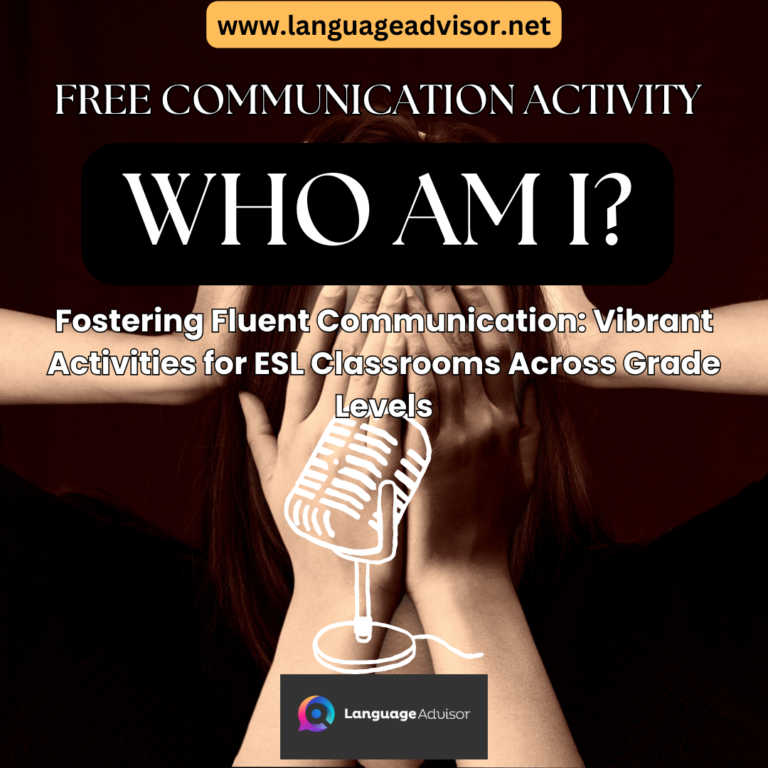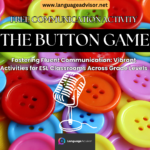WHERE IS SHE? – Communication Activity. Fostering Fluent Communication: Vibrant Activities for ESL Classrooms Across Grade Levels
WHERE IS SHE? – Communication Activity

Fostering Fluent Communication: Vibrant Activities for ESL Classrooms Across Grade Levels
Effective communication is a cornerstone of language acquisition, and in our journey together, we’ll delve into creative and interactive strategies crafted to amplify spoken language skills. Whether you’re a dedicated educator seeking fresh ideas to enliven your ESL classroom or a student eager to refine your English communication abilities, this post serves as your guide to fostering effective verbal expression through innovative activities.
From lively games and role-playing exercises tailored for elementary learners to nuanced discussions and real-world communication scenarios for junior high and senior high school students, our curated activities cater to the diverse needs of ESL classrooms. Get ready to infuse energy into your language lessons and witness the transformative power of engaging communication activities that transcend traditional language instruction.
So, let’s dive into this exploration of language and communication together, unraveling a tapestry of activities that will inspire and elevate language skills across different age groups. Whether you’re at the beginning of your language-learning journey or seeking advanced strategies, this blog post has something for everyone.
Let the journey towards fluent communication in the ESL classroom begin!

WHERE IS SHE?
DESCRIPTION
The teacher instructs students to create name cards before their colleague’s visit, then holds these cards and initiates a dynamic activity by asking, “Where is ___?” The teacher guides their students on how to reach the designated student, offering step-by-step directions such as “Go straight, turn left, stop, turn right, stop, turn around…”. As the student follows these instructions, they eventually locate the student and hand over the name tag, which the student attaches to their shirt.
After a few rounds, students may take on the role of providing directions. Following the students’ guidance, the visiting teacher distributes all the name tags. The teacher periodically pauses the game to review “directions” and to reinforce proper pronunciation, emphasizing the avoidance of katakana English. While this activity can be time-consuming, it proves to be an enjoyable and effective way to reinforce language skills. If time constraints arise, consider exploring the alternative option below.
OPTIONS
Read out students’ names. They must answer, “Here.” Find them, hand them their nametags, and say, “Nice to meet you.” Shake hands. They must answer “Nice to meet you, too!” Do not change the style of greeting; keep things simple.
WHERE IS SHE? – REMARKS
Should names be said in the student’s native language? Be careful to specify first or last name.

Also check out these communication activities

Did you find this article useful? If you have additional ideas, share them in the comments section below












